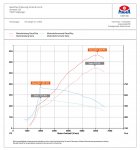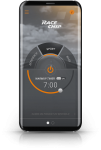Still, the question is very interesting:
Why were the stock Stinger GT and the RaceChip Stinger GT much slower than in many other test results?
Let me take one more step back:
What are good conditions to achieve good results?
- Perfect track condition:
- Even surface, so no slope at all
- Dry ground
- Warm temperature (not to hot, not to cold)
- Good tires
- Other conditions (such as AWD vs. RWD, launch control, ...)
How were the conditions of the other tests?
I don?t know, but I guess they were quite close to perfect conditions. At least I would make sure that the conditions are perfect, if I wanted to measure the fastest time possible.
I hope they did not do rolling starts.
E.g. in the cited article (
http://www.roadandtrack.com/new-cars/a13819415/kia-stinger-gt-by-the-numbers/) they write following:
?Stinger achieves its best off-the-line performance using launch control, which according to Kia is about 0.2 seconds quicker. In our testing, the rear-wheel-drive model was 0.2-second quicker than the all-wheel-drive variant.?
Furthermore, they were using ?Michelin Pilot Sport 4 summer tires?
The conditions during our test were following:
- Track condition:
- The ?track? was a random part of the street. I have no clue whether there was any slope
- The ground was wet (you can even see the rain in the video)
- Temperature: 3 degree Celsius, which is 37,4 Fahrenheit
- Good tires: Well, the car was equipped with random winter tires
- Other conditions: We measured the Stinger with AWD (we also would not have been able to be 0.2 seconds faster using RWD like in the article, since we would not have had enough traction)
Again, my colleagues were interested in the stock vs. RaceChip performance.
However, I am quite curious now, how a RaceChip Stinger GT would perform under perfect conditions. Please contact me if you are interested in doing an independent test.







![Really Confused [???:)] [???:)]](/images/smilies/confused.gif)

